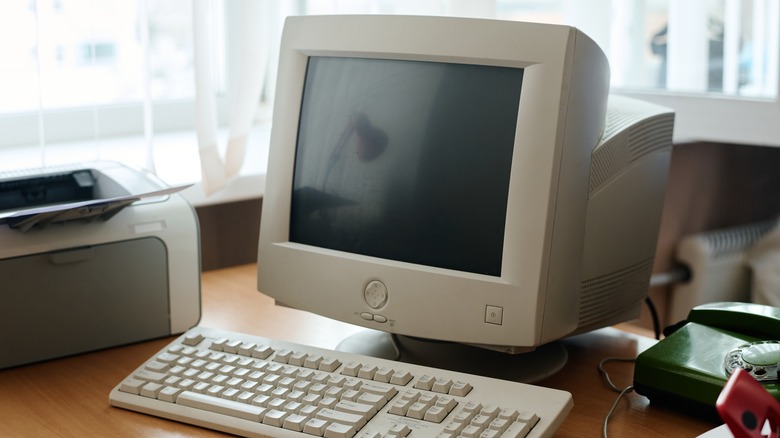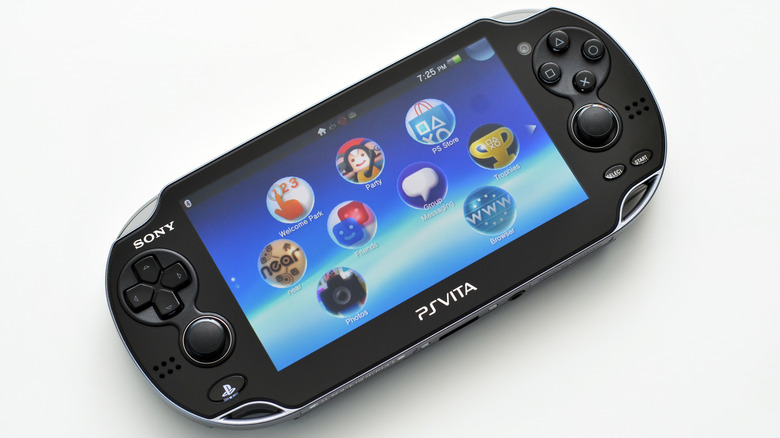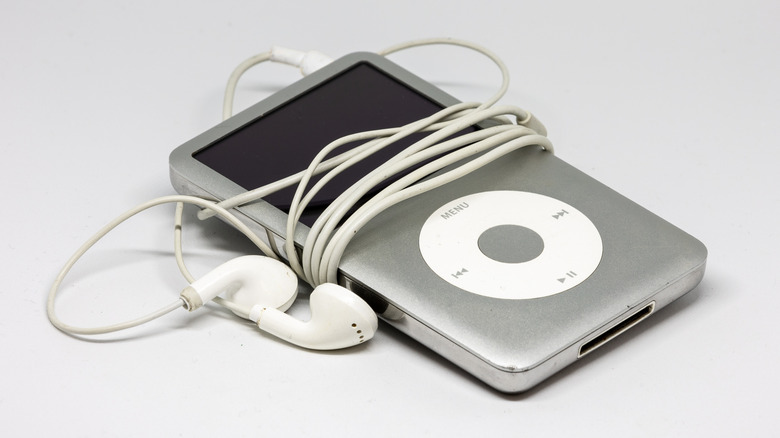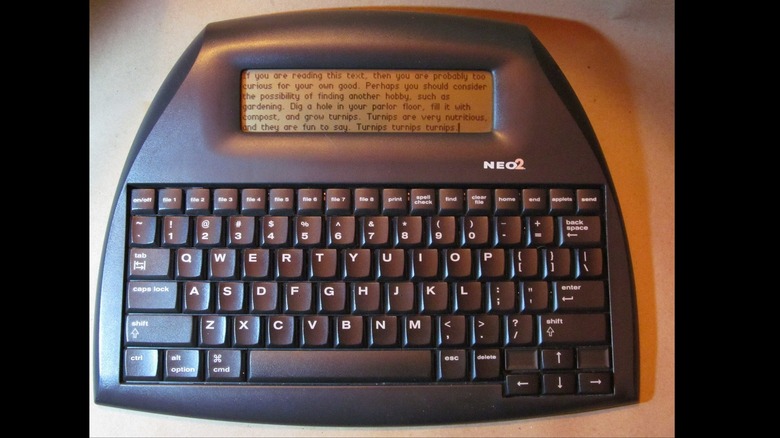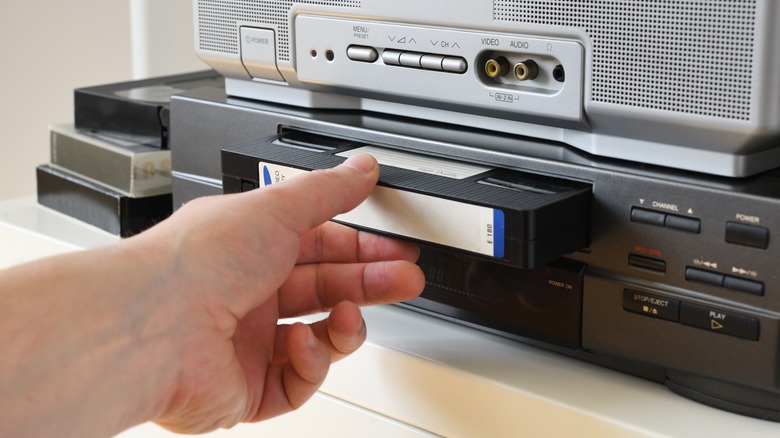5 Discontinued Gadgets We Still Find Useful, Ranked By Age
Once upon a time, anyone who was anyone had a Walkman strapped to their hip. Children of the '90s grew up caring for Tamagotchis and recording themselves on Yak Baks. There were gadgets that seemed like universal accessories for a moment, practical necessities of modern life, and then they disappeared. You can practically date when a photograph was taken by the technology people were playing with.
If there's any constant in the world of technology (or the world at large), it's change. Inventors and engineers are constantly pushing the boundaries of technological innovation until the most popular gadget of today becomes anachronistic retro tech of yesteryear. As the years slip by and new technologies emerge, our favorite old gadgets go the way of the dodo. Still, the best of them retain some of their appeal, keeping some of their original users or experiencing a resurgence years later. We need only look at the increasing popularity of vinyl records in recent years.
While these gadgets may be officially discontinued and functionally extinct, they still have uses (or at least vibes), which can't be duplicated by more modern equivalents. The times, they are a-changin', but these discontinued gadgets still have a place in our hearts.
PlayStation Portable (2004)
Like all the best video game systems, the PlayStation Portable (PSP) transports the player back to those first few years after the turn of the millennium. It was produced from 2004 to 2014 and was an all-purpose portable entertainment system. It was followed by the similarly styled PlayStation Vita in 2011, which was discontinued in 2019.
The PSP first hit shelves in the United States in 2005, competing with Nintendo's handheld DS system for a share of the handheld market. Unlike other handhelds, which used cartridges, the PSP used Universal Media Discs (UMD), a proprietary format developed by Sony. Each disc could hold nearly 2GB of data on what was essentially a tiny compact disc housed in a plastic enclosure. In addition to playing PlayStation games on the go, the PSP could also play television shows and movies. Hundreds of films were released on UMD.
Beyond its solo gameplay capabilities, it could also connect to other PSPs, the PS2, and PS3. Approximately 80 million units were sold throughout the 10-year lifespan of the device, many of which can still be found in second-hand stores. With a little time and a few online searches, you can also modify your PSP to play classic games and more.
iPod (2001)
The iPod was first introduced in 2001 and discontinued in 2022. Over the two decades of its existence, Apple sold nearly half a billion units and ushered in the age of the MP3 player. While the iPod's functions have since been subsumed by the smartphone, there's nothing quite like having a dedicated music player that isn't dependent on, or hindered by, an internet connection.
It's difficult to define the iPod as a specific thing. Over the course of its existence, the iPod changed dramatically, from a bulky brick with a monochrome screen and a click wheel to a sleek, modern touchscreen design. It evolved from holding a few hundred or a few thousand songs to capturing photos, playing videos, and connecting to music streaming services online. Somewhere along the way, the iPod lost what made it special, and that's why it ultimately went extinct.
If you want a modern music player, you can get that from a smartphone. If you want a dedicated music player with a piece of technological nostalgia that fits in your pocket, pick an iPod that was produced before 2005.
AlphaSmart (1993)
AlphaSmart released a string of "smart keyboards" from 1993 to 2013, primarily marketed as an educational tool for use in classrooms. In addition to helping kids learn to type, they were the perfect on-the-go word processor for distraction-free writing. They were basically an older version of the FreeWrite, which mirrors the AlphaSmart's functionality with a few modern bells and whistles.
The AlphaSmart Neo 2, one of the last versions to be released, was essentially an electronic keyboard with a narrow digital screen that showed a couple of lines of writing at a time. You couldn't really edit while writing without deleting what you'd written and rewriting it from scratch, which encouraged you to keep drafting rather than spinning your wheels.
It had no internet connectivity, and you couldn't do anything with it except write. Files were stored locally and copied to a computer when the AlphaSmart was connected via cable. The copying process was appropriately old school. With the cable connected, your writing moved onto a document one character at a time, so you could watch the page fill up as if you were typing at super speed.
VHS tapes (1976)
Short for Video Home System, JVC first introduced VHS tapes in 1976. It became the dominant home video format after winning a battle with Sony's Betamax format. VHS remained the dominant format until the introduction of DVD, and the format was ultimately discontinued in 2006. The last major studio film to receive a VHS release was "A History of Violence," though there have been a few small prints of more recent films, like 2024's "Alien: Romulus."
VHS tapes functioned by housing 800 feet of half-inch mylar tape on a couple of small spools. That tape contained recorded audio and data streams, which were read by an at-home VCR (Video Cassette Recorder) or VCP (Video Cassette Player).
Physical media has largely fallen out of favor in recent years, thanks in large part to the internet, mobile video devices like smartphones and tablets, and streaming devices. While streaming services are convenient, they come with a cost. You have to pay a monthly fee indefinitely to access your favorite entertainment, and you're beholden to licensing agreements, Wi-Fi connections, bandwidth limitations, and advertisements. Additionally, in some instances, media has been altered. If you want to watch movies without all the baggage, the best way is to watch them the way they did in the old days.
CRT TV (1897)
Cathode ray tubes were a central part of early television history. They were small vacuum tubes housing one or more electron guns, which emitted an electron beam that, when manipulated, created images on a screen. Until relatively recently in the technological timeline, most consumer televisions (not to mention computer monitors) were CRTs.
They were bulky, heavy, and required a robust stand or entertainment center. Since about 2010, the CRT has become less popular, losing market share to flat-panel TVs capable of mounting nearly flat against the wall. While modern TVs take up far less space, are lighter, have better definition, and often feature built-in streaming capabilities, they aren't always preferred. When you want to watch old movies or play classic video games, the scan lines of a CRT can't be beat.
Unfortunately for retro tech enthusiasts (or anyone who just wants to play "Duck Hunt"), CRT TVs aren't produced anymore, and they're becoming increasingly difficult to find on the secondary market. Get one for yourself while the getting's good.
